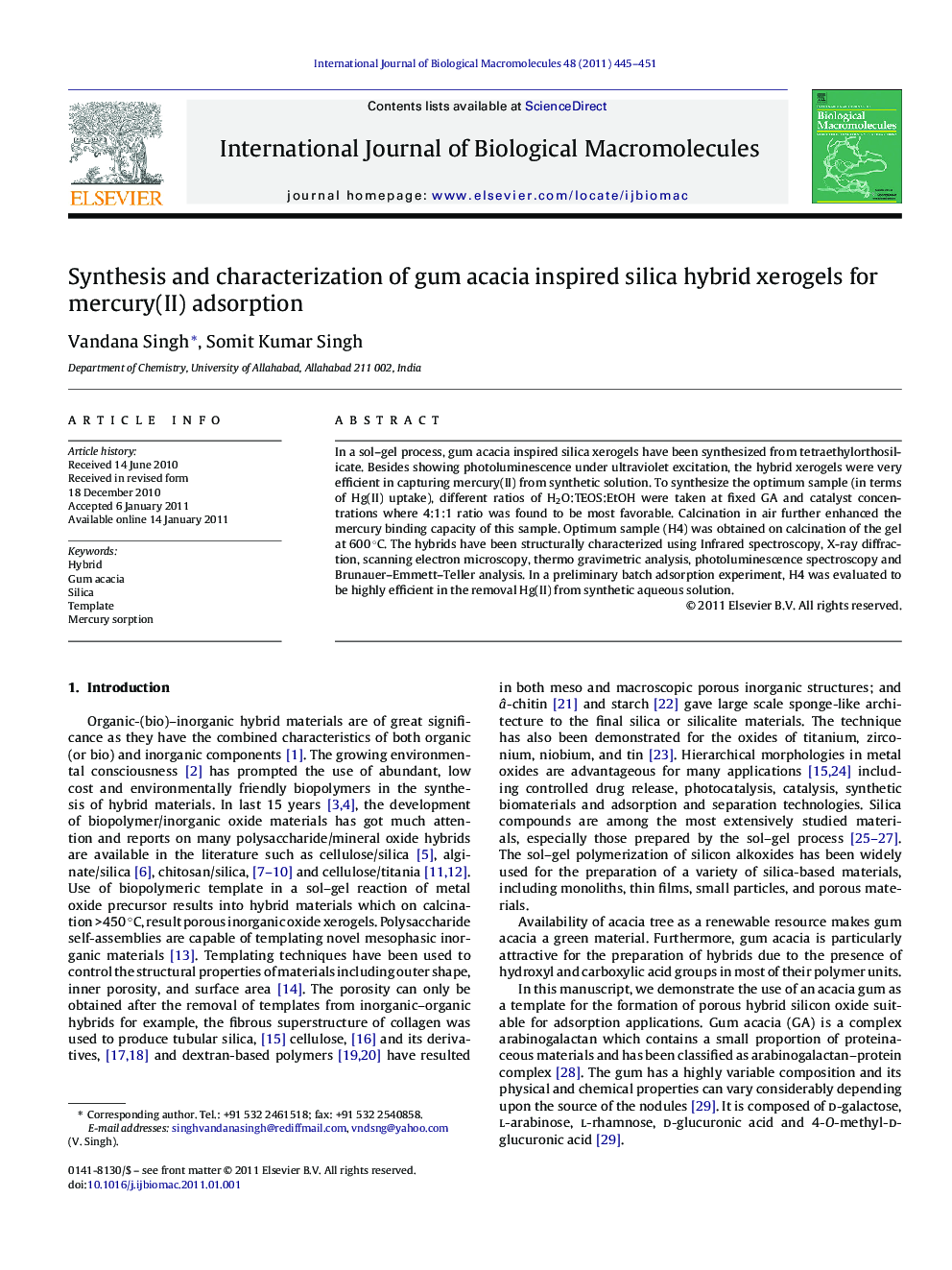| Article ID | Journal | Published Year | Pages | File Type |
|---|---|---|---|---|
| 8335998 | International Journal of Biological Macromolecules | 2011 | 7 Pages |
Abstract
In a sol-gel process, gum acacia inspired silica xerogels have been synthesized from tetraethylorthosilicate. Besides showing photoluminescence under ultraviolet excitation, the hybrid xerogels were very efficient in capturing mercury(II) from synthetic solution. To synthesize the optimum sample (in terms of Hg(II) uptake), different ratios of H2O:TEOS:EtOH were taken at fixed GA and catalyst concentrations where 4:1:1 ratio was found to be most favorable. Calcination in air further enhanced the mercury binding capacity of this sample. Optimum sample (H4) was obtained on calcination of the gel at 600 °C. The hybrids have been structurally characterized using Infrared spectroscopy, X-ray diffraction, scanning electron microscopy, thermo gravimetric analysis, photoluminescence spectroscopy and Brunauer-Emmett-Teller analysis. In a preliminary batch adsorption experiment, H4 was evaluated to be highly efficient in the removal Hg(II) from synthetic aqueous solution.
Related Topics
Life Sciences
Biochemistry, Genetics and Molecular Biology
Biochemistry
Authors
Vandana Singh, Somit Kumar Singh,
